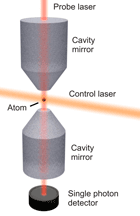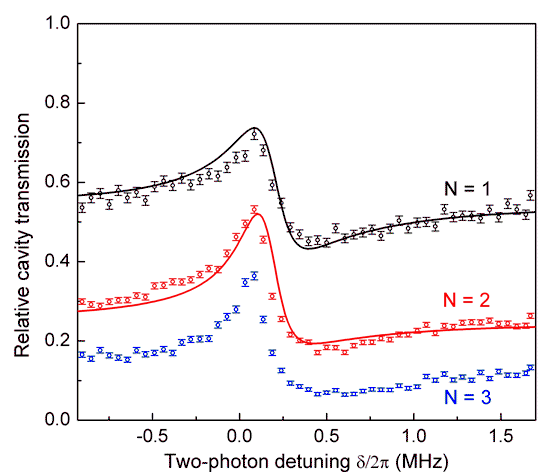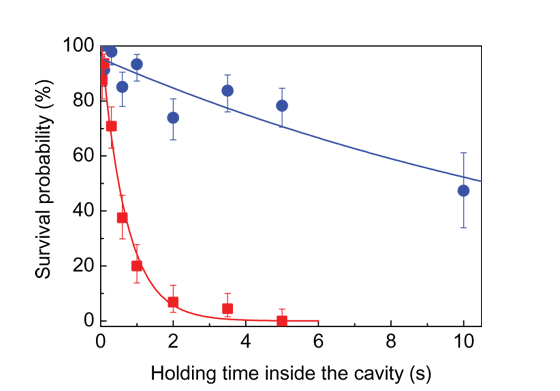 The effect of EIT (electromagnetically induced transparency) is well known in quantum optics: A probe and a control laser are shown onto an atomic vapor. The absorption of the probe laser by the atoms is measured. If the control laser is turned off, the absorption becomes high because the frequency of the probe laser is close to an atomic resonance. Turning the control laser on, however, one can achieve that the absorption of the probe laser drops significantly due to a destructive interference between the atomic excitation paths (there are two ground states and one excited state) of the two lasers. That means the atomic sample becomes transparent to the probe if the control laser is turned on and the frequency detunings of both lasers to the excited state (the difference between these detunings is named two-photon detuning) are the same.
The effect of EIT (electromagnetically induced transparency) is well known in quantum optics: A probe and a control laser are shown onto an atomic vapor. The absorption of the probe laser by the atoms is measured. If the control laser is turned off, the absorption becomes high because the frequency of the probe laser is close to an atomic resonance. Turning the control laser on, however, one can achieve that the absorption of the probe laser drops significantly due to a destructive interference between the atomic excitation paths (there are two ground states and one excited state) of the two lasers. That means the atomic sample becomes transparent to the probe if the control laser is turned on and the frequency detunings of both lasers to the excited state (the difference between these detunings is named two-photon detuning) are the same.
We have studied the effect of EIT with single atoms inside our cavity (read our publication). A sketch of the experimental setup can be seen on the left side. In the experiment we fixed the frequency of the probe laser 20 MHz above the resonance frequency of the atom but on resonance with the cavity. Then we measured the transmission of the probe laser as a function of the two-photon detuning of the control laser.

Furthermore we observed cooling of the atoms inside the cavity (see data below). The atoms survived (=stayed inside the trap) significantly longer when they were most transparant to the probe light (blue data) compared to the situation where probe and control laser were turned off (red data).










